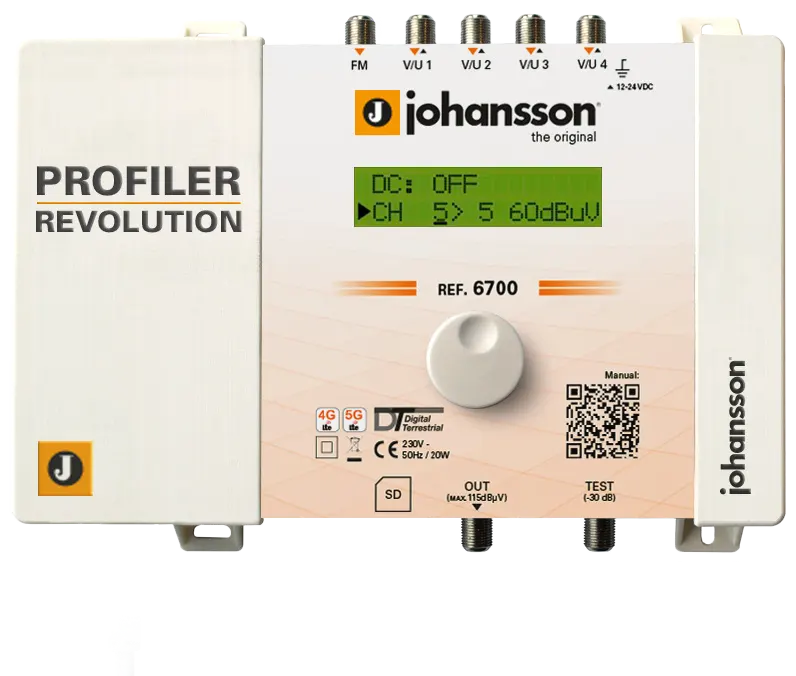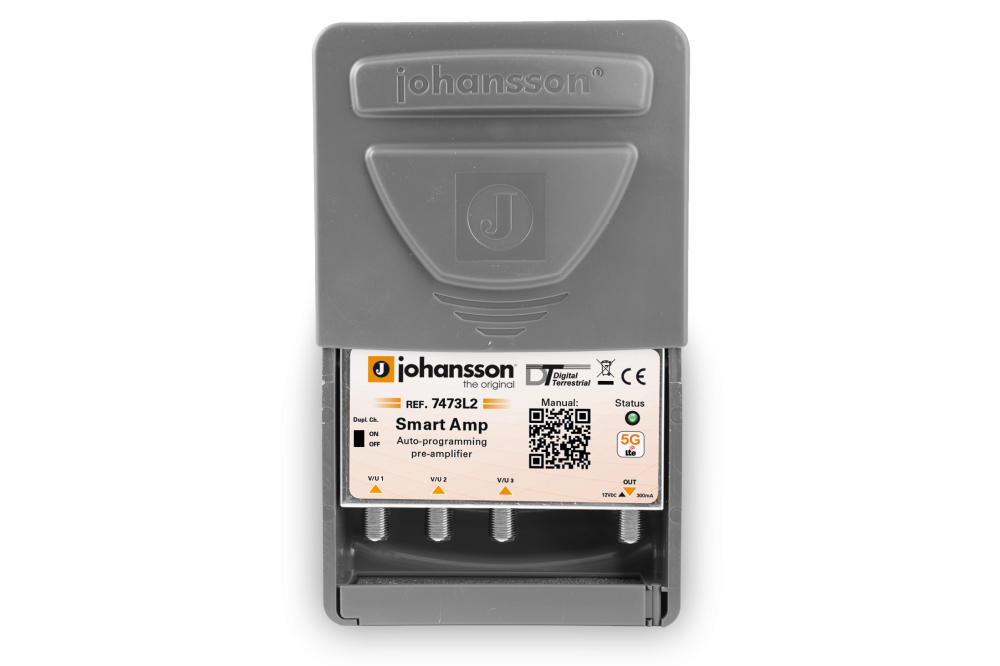It’s not often that we see something new in the world of amplifiers for over-the-air television. So when something does come along, it’s worth taking a second look at. That’s exactly what I did with a pair of very unique amplifiers from Johanssen.
Who is Johansson?

I wouldn’t blame you if you’d never heard of Johansson. They aren’t well known in the USA. However, they’ve been creating products for the over-the-air market in Europe for over 60 years. They’re part of the Unitron Group, which you might have heard of. Unitron is a contract manufacturer for DIRECTV. They make amplifiers, polarity lockers, and taps for commercial installation. This should tell you that they’re serious about quality.
In Europe, over-the-air TV is a much bigger deal than it is here. Cable TV is far less common there. A lot of apartment buildings have their own master antenna systems, so if one part breaks down the entire building loses live TV. That’s less of a problem in the age of streaming, but for the entire 20th century, it had the potential to be a big problem. So, parts for OTA distribution in Europe tend to be industrial quality.
Introducing the Profiler Revolution

The Johansson Profiler Revolution is unlike any amplifier you’ve ever seen. It will handle up to four UHF/VHF inputs as well as one FM input. These are VHF-High inputs, so channels 2-6 are not included, but as far as I can see these signal aren’t blocked, either.
There’s the standard compliment of features: LTE and 5G filtering, multiple inputs, and a test port for checking signal at the amplifier. You’ll need that test port, too, because the maximum output level of this amplifier is a scorching +6dBm. You can apply up to 60dB of amplification per channel. You won’t need more of an amplifier than this.
What makes this amp special is the degree of customization that’s available. You can literally set the amplification level manually for each of 50 different channels for each of four inputs. If you want to combine antennas, you can do it. If you want to filter out one channel from one antenna, you can do that too. You get a signal meter built into the device and easy configuration. There’s very little that this device can’t do. And, once you have it just right, you can save the results to an SD card so that if the amp goes down you can set another one up quickly.
Johansson Smart Amp

The Johansson Smart Amp looks like a more traditional mast-mounted amplifier. There’s a little more than meets the eye here, however. First of all, this amplifier has three wideband inputs for VHF-High and UHF. Like other amplifiers, it does come in a waterproof enclosure and seems to pass signals along if power is lost. It has LTE and 5G filtering like other amplifiers. But that’s where resemblance ends.
First of all this amplifier features full auto-gain-control. That means that every signal is brought to the same level regardless of input level. Its output power is -18dBm which, while not as ridiculous as the Prfiler Revolution, is still massively high. Upon powerup, the amplifier does a full channel scan and continues to provide monitored output based on input power.
There are two settings for this amplifier that can be applied globally. If the same signal is received from two inputs, it can be combined and the result amplified to -18dBm, or the weaker signal can be completely ignored. This is done on a channel by channel basis, so if one signal is stronger on one antenna while another is stronger on another antenna, the weaker one is always ignored.
Real-world testing
I put these amplifiers to work in our test environment in Southern California. The Profiler Revolution did what it promised, delivering absurd signal levels with a level of customization that’s more than I’ve ever seen before.
The Smart Amp also delivered strong results with absolutely no work whatsoever. I tried it with two different cable lengths on two antennas and told it to combine, and it still produced usable signals. In that scenario though, I did get better results by telling it to discard the weaker signal.
I take Johansson at their word that these amps have a 7dB noise figure, which is higher than other, much less expensive amps. However, the output level is so high that you likely won’t need a separate distribution amplifier. That means you won’t get the added noise of a second amp, so it’s not really a big deal.
The simple fact is that these amplifiers are not priced for regular folks to use. These are serious pieces of equipment and you’ll pay a serious price. But I’ll tell you this. If you’re distributing over-the-air signals throughout a large space, you’re going to want to look into them. Use one if you want ultimate customization, and the other if you want a simple set-it-and-forget it solution.
And of course, shop for everything you need at SolidSignal.com.




